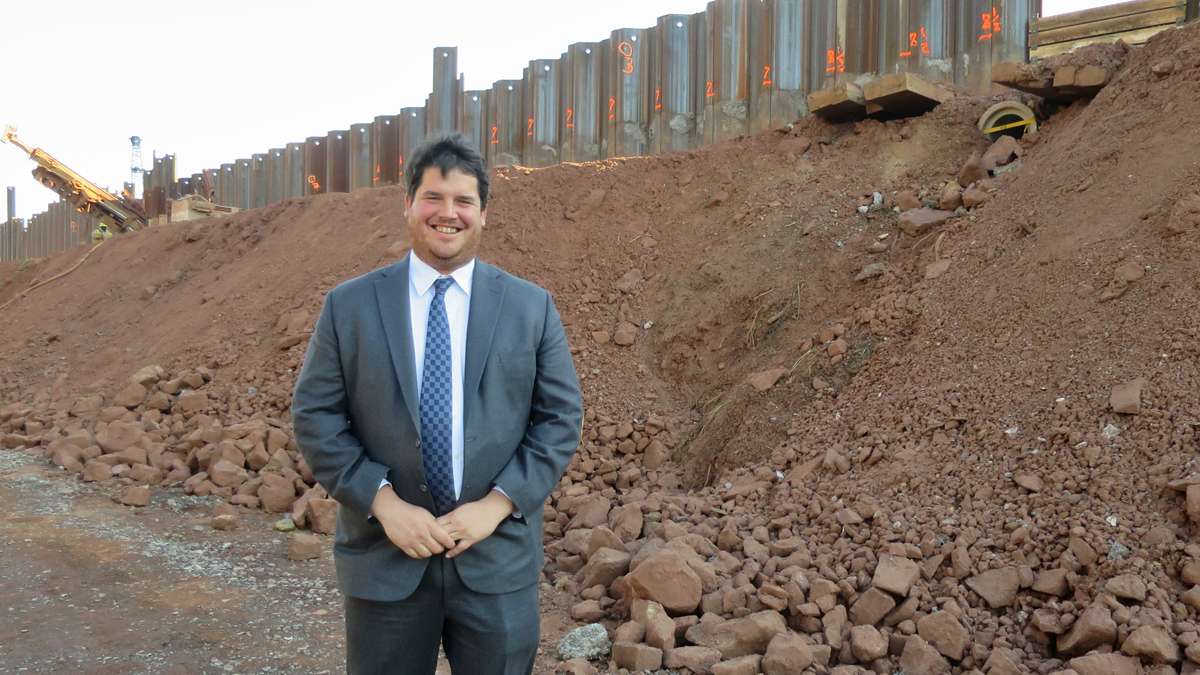The state of Pennsylvania’s bridges, Part 2: Rebuilding them faster
ListenReplacing a bridge takes years. So the state is speeding up the process.
This is the second story of our three-part series on the state’s bridges.
Twenty-three percent of Pennsylvania’s bridges are structurally deficient, and many need to be replaced. But between permitting, design, and construction, building a new bridge takes years.
That’s why the Pennsylvania Department of Transportation is trying to speed things up.
Traditionally, PennDOT hires companies to replace its bridges one or two at a time. Now, it’s trying something different: hiring a team of private contractors to replace hundreds of state bridges really quickly. It’s called the Rapid Bridge Replacement Project.
“We expect that we’re going to deliver 558 bridges in three and a half years instead of what would have taken us eight to twelve years under our traditional method,” says PennDOT Secretary Barry Schoch.
The $899 million program is a form of public-private partnership (P3), an arrangement in which the government partners with a private entity to design, build, maintain, and sometimes operate a public asset, like a highway or bridge.
In 2012, Pennsylvania passed Act 88, the state’s public-private partnership law. This bridge replacement program is the first big project launched under that law.
The private entity, Plenary Walsh Keystone Partners, is a partnership among several firms. Plenary Group is the lead investor, HDR is the lead engineer and The Walsh Group is the lead contractor.
How they’re speeding up the process
Since all the bridges in the program are around the same size, engineers will be able to put together a couple dozen standard designs they can use over and over again in different locations, says Ken Wright, a project manager with HDR, the engineering firm PennDOT hired.
Wright says that when the engineers are looking at an individual bridge site, they’ll pull pieces of the standard designs together, “sort of like a cafeteria menu of different components of the bridge, in order to come up with an overall design for [that] site.”
He says this approach might means some bridges end up a little stronger than they need to be, and they might cost a little more money too. But that’s okay, he says, because the time savings add up.
“It’s the old adage that time is money,” Wright says. “It’s better for us to do whatever moves the schedule along faster than to try to have the strength we provide for each bridge match the exact dimensions of that bridge.”
The contractors will also mass-produce some of the concrete bridge parts in a factory before construction starts. Maybe they’ll make a bunch of 50-foot bridge surfaces, for example.
Andrew Swank is the president of Swank Construction. His company will be replacing some bridges under the state’s new program.
Swank says that usually, a construction crew has to wait weeks for each section of concrete on a bridge to harden and strengthen before they can move forward. That means construction on a small bridge can take months, he says.
It will only take a couple weeks to build bridges that have factory-made parts, because the pieces are hardened ahead of time and come ready to assemble, Swank says.
It’s kind of like when you buy a bookshelf from Ikea. “The pieces will have slotted ends. This piece will fit into this piece and key into this piece,” he says.
The construction team will lift the pieces up with a crane, slide them into place, and “have a bridge in very short order,” Swank says.
Faster construction means less time the bridge is closed to traffic.
The terms of the deal
A growing number of states are using P3s to replace or repair their infrastructure. But not all P3s are created equal. In one type of P3, the private sector operates a public asset and can collect tolls or other revenue from the public to pay off its construction loans. Critics say this type of P3 is risky, because it gives a lot of control to the private entity.
The Rapid Bridge Replacement Project isn’t that type of P3. In the state’s new program, the private contractors will design and build the bridges within the agreed timeframe. Then the contractors are required to maintain the bridges for 25 years and return them to PennDOT in good condition (or pay penalties, if the bridges aren’t). PennDOT will own the bridges throughout that period.
The contractors will not be allowed to collect tolls. Instead, they’ll pay off their loans using periodic payments from PennDOT. The money comes from the agency’s budget, including revenue raised under Act 89, the state’s transportation funding law signed by Governor Corbett in 2013.
PennDOT says the contractors have an incentive to do the work quickly, because they will only be paid after hitting certain milestones, like finishing construction of a bridge. They will also want to build the bridges carefully, because they will have to pay for any repairs on the bridges during the 25-year contract, the agency says.
The program is “an opportunity for the private sector to bring innovation in the design and delivery of our bridge projects and then take the risk of the innovations they choose, as they are responsible and on the hook for maintenance,” says Secretary Schoch.
The bridges will have to meet the same safety standards as the rest of the state’s bridges. The private partners will conduct the bridge inspections, and PennDOT will perform unannounced inspections on a sample of bridges to make sure the contractors’ inspections are up to snuff.
If the contractors don’t build the bridges as quickly as they agreed to, they’ll be penalized financially. PennDOT says that if the private firms can’t pay their construction debt, the agency is not on the hook for the loans.
PennDOT expects to save money, along with time, through this program. It says the average cost for design, construction and maintenance of each bridge in the project will be $1.6 million. Through the standard process, the average cost over the same time period would be more than $2 million.
The agency says it can’t replace every structurally deficient bridge in the state this way. But it’s hoping to expand the program, if all goes well. Construction starts in summer 2015.
Our map of the state’s structurally deficient bridges highlights the bridges that will be replaced under the P3 program.
This is the second in a three-part series on the state’s bridges. Our first story explains what structurally deficient means, and how weight restrictions and closures affect Pennsylvania residents. In our third story, we look at how Pennsylvania monitors its bridges for safety.
WHYY is your source for fact-based, in-depth journalism and information. As a nonprofit organization, we rely on financial support from readers like you. Please give today.















